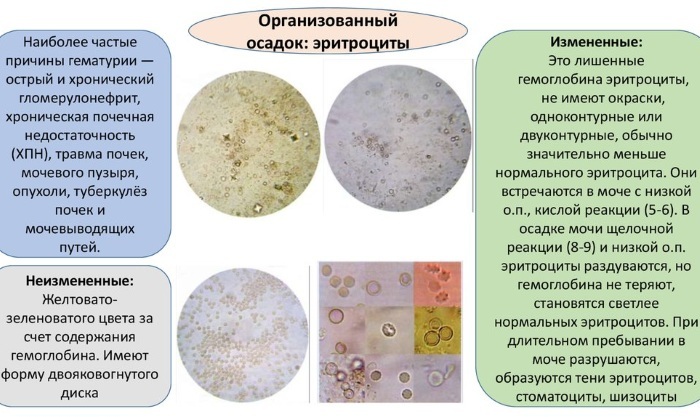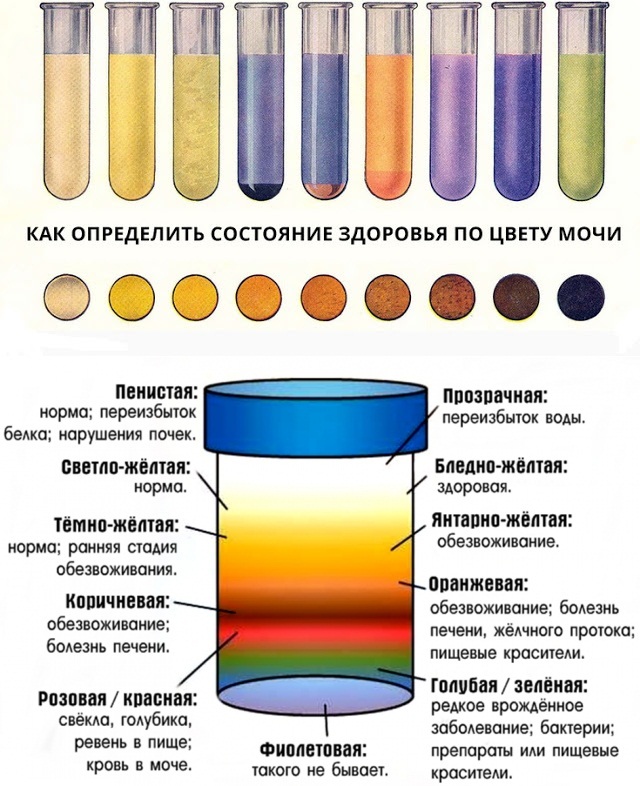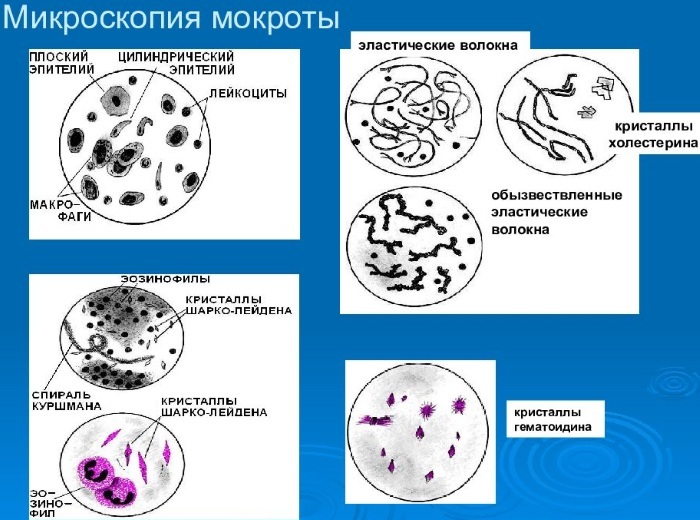Traces of hemoglobin in urine in adult men, women, as well as children of all age groups - this is the first sign of a pathological condition blood vessels, dysfunctional disorders in the hematopoietic system, kidney disease and other excretory organs systems.
The appearance of signs of hemoglobin in urine indicates intravascular hemolysis of erythrocytes, as well as a gradual change in the cellular composition of the blood. This is a dangerous symptom that can occur due to the presence of hematological factors, as well as due to the negative influence of external factors.
Record content:
- 1 How and under what conditions is formed in urine
- 2 Symptoms
- 3 Indications for research
- 4 How is it determined
- 5 Preparation and analysis
- 6 Decoding the results
- 7 When to see a doctor
-
8 How to bounce back
- 8.1 Medications
- 8.2 Traditional methods
- 8.3 Other methods
- 9 Possible complications
- 10 Video about urine analysis
How and under what conditions is formed in urine
Traces of hemoglobin in the urine of men, women and children should be completely absent. The appearance of this substance in the composition of urine is called hemoglobinuria. In the bloodstream of healthy people, on average, about 10% of all red blood cells are destroyed, which release free hemoglobin.
In this regard, the blood plasma contains about 4 mg% of this protein compound. Free hemoglobin actively interacts with haptoglobin, forming strong biochemical bonds. This compound is not able to overcome the kidney filter, since its molecular weight is from 160 to 320 kDa.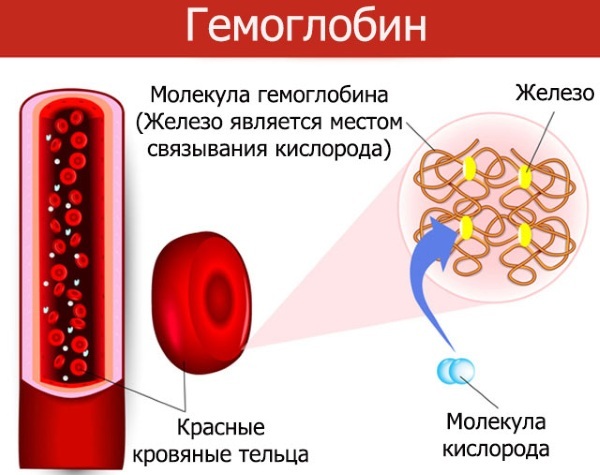
The molecular complex, consisting of free hemoglobin and haptoglobin, enters the liver tissue and spleen, where it undergoes chemical decomposition with the formation of the final metabolites of the pigment exchange.
If in the human body these biochemical processes proceed stably, and the kidneys, liver and spleen perform their functions, then hemoglobin molecules do not penetrate into the composition of urine, since they break down into constituent substances inside organism. Hemoglobinuria develops only when a critical amount of free hemoglobin (over 100 mg%) enters the blood plasma.
Haptoglobin, which is in the bloodstream, is unable to bind excess concentration of free hemoglobin, which entails its active reabsorption by kidney cells.
The absorbed hemoglobin accumulates in the epithelial tissues of the proximal canals, and then, in the process of chemical oxidation, it can be converted into the substances hemosiderin and ferritin. Part of the absorbed hemoglobin enters the urine, which is subsequently detected in the course of its laboratory research for biochemical parameters.
Traces of hemoglobin in urine in women, men and children appear after prolonged or short-term the effects of external factors, or are one of the symptoms of a painful state of internal organs. The table below details the conditions that can lead to the formation of free hemoglobin in urine.
| Factors affecting the appearance of traces of hemoglobin in urine | Description of pathological processes |
| Night hemolysis of erythrocytes | In this case, the ingress of hemoglobin into urine occurs exclusively at night, when a person is sleeping, and the pH of his blood is at a lower level. This pathological state of the body is due to the presence of a hematological disease in the form of acquired anemia, a type of which is extremely rare in medical practice. Mass death of erythrocytes occurs in paroxysms. In the shortest possible period of time, a large amount of free hemoglobin is released into the blood plasma. The tissues of the liver and spleen are not able to provide prompt binding and cleavage of this substance. Such hemoglobinuria most often occurs in men and women, whose age is from 20 to 40 years. Night hemolysis of erythrocytes is associated with the presence of heavy physical activity, chronic infection, intoxication of the body, the consequences of prolonged intake of iron-containing drugs. After eliminating the negative influence of external and internal factors, urine analysis indicators are stabilized, and free hemoglobin ceases to saturate the blood plasma. |
| Severe intoxication of the body | Contact with chemical or biological substances, overdose of potent drugs drugs that have toxic properties, can lead to massive hemolysis erythrocytes. In this regard, there is a sharp change in the cellular composition of the blood, the death of red blood cells with the release of free hemoglobin. This is a dangerous condition of the body that requires the use of emergency measures. |
| Continuous static load | Traces of hemoglobin in urine can periodically appear in absolutely healthy people who have been on their feet for a long time, have traveled long distances on foot. Similar symptoms are often found in soldiers who practice marching, travelers, athletes who are involved in race walking or marathon running. In this case, hemolysis of erythrocytes is associated with a static effect on the plantar part of the foot, the consequences of which is damage to red blood cells with the release of an excess amount of free hemoglobin. Traces of a protein compound are not found in urine after a short rest and recovery of the body. |
| The negative effects of cold | After prolonged bathing in cold water or hypothermia of the body due to being outdoors, paroxysmal hemoglobinuria develops. In human blood, an amboceptor hemolysin is formed, which binds to erythrocytes, causing their premature hemolysis. The danger of the pathological process lies in the fact that in severe hypothermia, changes in the cellular composition of the blood can be irreversible. After the restoration of normal body temperature in a person, signs of free hemoglobin in urine disappear. On average, this happens after 24-48 hours. |
| Autoimmune reaction | This reason for the appearance of traces of hemoglobin in urine is very rare. The conditions for the development of the pathological state of the body are due to the fact that the cells of the immune system regard erythrocytes as foreign and foreign agents. Red blood cells are constantly attacked, which ultimately leads to an increase in the level of free hemoglobin, the detection of its traces in the urine and the development of severe anemia. |
| Blood transfusion | In the case of donor blood transfusion, which has an incompatible antigenic structure, acute hemolysis of erythrocytes develops with the release of a large amount of hemoglobin. The protein compound saturates the composition of urine, and the symptoms of hemoglobinuria persist for several days. |
| Diseases of an infectious origin | Bacterial pathogens of diphtheria, typhoid fever, syphilis, scarlet fever cause the death of red blood cells and the appearance of an excess amount of free hemoglobin. As the patient recovers, the biochemical composition of urine stabilizes. |
| Pathology of the organs of the genitourinary system | Acute inflammatory diseases of the tissues of the kidneys, bladder and urethra can lead to the destruction of their structure and the appearance of ulcerative formations. Hemolysis of erythrocytes is caused by local secretions of blood and the breakdown of its cells. After elimination of the underlying disease, traces of free hemoglobin in the urine disappear |
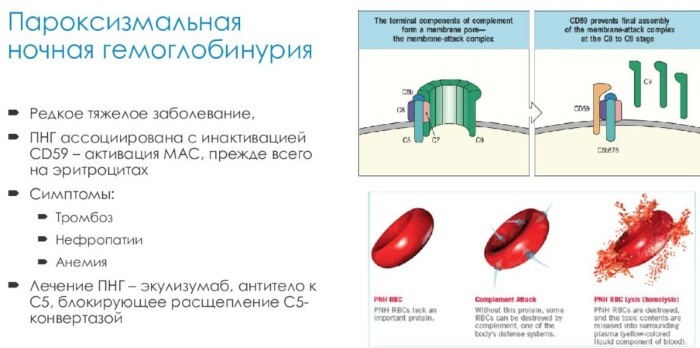
Regardless of the conditions under which hemoglobin molecules appeared in the composition of urine, its presence indicates a disease state of the body. A person with a similar symptom must undergo a comprehensive examination aimed at detecting pathology.
Symptoms
Traces of hemoglobin in the urine of women, men and children are found based on the results of a study of the constituent components of urine.
Signs of pathology are manifested as follows:
- frequent urge to urinate;
- attacks of spasmodic pain in the lumbar spine from the location of the kidneys;
- urine takes on a rich dark brown hue;
- decreased physical activity;
- fast fatiguability;
- dizziness and a feeling of lack of air (occurs with a severe form of hemoglobinuria, which led to the development of chronic anemia);
- headache;
- lowering blood pressure;
- pallor of the skin;
- drowsiness.
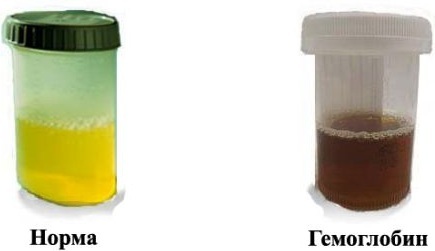
Most patients in whose urine traces of hemoglobin are found do not always experience the entire list of these symptoms. The presence of this protein substance can be diagnosed absolutely by chance based on the results of a routine examination.
Especially if there are chronic foci of bacterial infection in the human body, he intensively goes in for sports, every day contacts with chemicals of toxic etiology, or takes medications with hemolytic properties.
Indications for research
Traces of hemoglobin in the urine of women, men and children can only be detected in a biochemical laboratory.
The attending physician prescribes the patient to take an urine test for the presence of molecules of this protein substance, if there are signs of the following pathologies:
- inflammatory processes in the organs of the genitourinary system, the development of which is accompanied by purulent and bloody discharge;
- severe burns of the skin surface with damage to more than 30% of the body;
- intoxication of the body caused by prolonged exposure to toxic substances of a chemical or biological nature of origin;
- infection with scarlet fever, diphtheria, typhoid fever, malaria, syphilis;
- rejection of donor blood;
- the period of rehabilitation after undergoing surgery (the factor of opening internal bleeding is excluded);
- perforated ulcer;
- severe injuries to the kidneys, liver and spleen;
- prolonged hypothermia of the body;
- all types of anemia.

The study of urine for traces of hemoglobin is carried out in the process of diagnosing the patient, during the course of the therapeutic course, and also after 1-2 weeks following the results of recovery. For example, infection with a streptococcal infection requires repeated delivery of urine 10 days after the disappearance of the symptoms of the disease.
How is it determined
Traces of hemoglobin in the urine of women, men and children are determined by performing a general analysis of urine. The study of biological material is carried out in a biochemical laboratory, which is staffed by specialists with appropriate qualifications.
Preparation and analysis
In order for the results of the general analysis of urine to be as reliable as possible, before passing urine, it is recommended to observe the following preparation rules:
- in the evening on the eve of passing urine, do not eat vegetables and fruits, the natural pigments of which can change the color shade of urine (carrots, cranberries, beets);
- stop taking medications with diuretic properties 24 hours before visiting the laboratory;
- do not drink alcohol 3 days before the analysis;
- 12 hours before the examination, do not eat food with a high content of hot spices, the presence of which can lead to irritation of the mucous membrane of the urinary system;
- 5 days before the diagnosis, stop taking medications, the side effects of which can lead to hemolysis of erythrocytes.
These are the basic rules for preparing for the delivery of a urine test for signs of traces of hemoglobin. For the rest, a person must lead a habitual lifestyle so that the results of urine analysis are objective.
The step-by-step process of passing an analysis to detect traces of hemoglobin is as follows:
- After waking up from sleep, it is necessary to perform thorough hygiene of the genitals using soap, warm water and a clean dry towel.
- Get a sterile urine collection container, which can be purchased directly from the laboratory or pharmacy.
- Flush a small amount of morning urine down the toilet to cleanse the urethra, and then fill the urine test bottle with urine.
- Close the container with a lid, and then deliver the biological material for laboratory research within 1 hour.
On average, you will need at least 50 ml of urine. This is the minimum amount of urine required for this type of analysis.
Women are advised to refrain from passing urine during menstruation, as well as 2 days after the end of menstruation. This is necessary in order to minimize the risk of blood droplets entering the urine composition. Their presence will lead to obtaining distorted results.
Decoding the results
Deciphering the examination results should be dealt with by the attending physician, who conducts the initial examination of the patient, and then ordered the delivery of urine. In a person who does not have health problems, signs of hemoglobin should not be present in the urine. 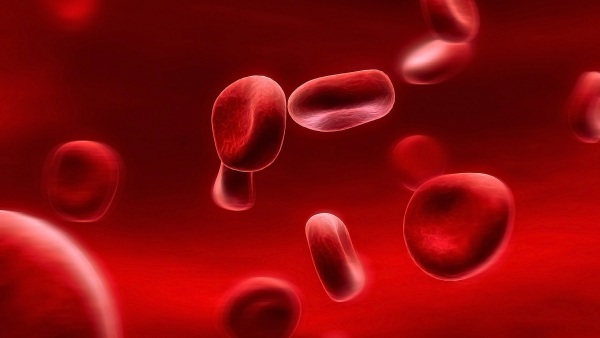 The presence of even a small amount of this substance indicates a painful state of the body.
The presence of even a small amount of this substance indicates a painful state of the body.
When to see a doctor
A visit to a general practitioner should take place in the first 24 hours after a person has discovered the following symptoms indicating admission hemoglobin in urine:
- the acquisition of brown or red urine;
- dizziness and loss of energy;
- rapid physical fatigue;
- pallor;
- feeling short of breath;
- drowsiness;
- headache;
- prolonged drop in blood pressure;
- heart palpitations;
- nausea;
- loss of appetite;
- frequent urge to urinate.
The appearance of hemoglobin molecules in the urine is just one of the symptoms of the underlying disease, the elimination of which will ensure the stabilization of biochemical processes in the body.
How to bounce back
In order to normalize the indicators of the biochemical composition of urine, as well as prevent further release of free hemoglobin, it is necessary to eliminate the cause of intravascular hemolysis erythrocytes.
Hemoglobinuria caused by exposure to cold or heavy physical exertion does not require the use of medication therapy. The use of drugs is advisable only in the case of intoxication breakdown of erythrocytes or acquired anemia.
Medications
In order to normalize the indicators of free hemoglobin, the following drugs can be used:
-
Troxerutin Is an angioprotective agent that strengthens the walls of veins and capillaries, prevents vascular damage and hemolysis erythrocytes (prescribed to take 1 capsule 2-3 times a day for 1 week, and the average cost of the medication is RUB 165);
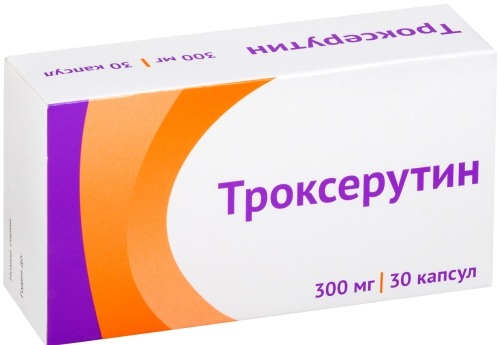
- Active iron Is an organic preparation that replenishes the physiological loss of hemoglobin, while measures are taken to eliminate the causes, provoking hemoglobinuria (the medication is taken at the same time, 1 tablet per day with food, and its cost is 105 rub. per package);
- Activates iron with lactoferin Is a drug that replenishes iron deficiency, and also stabilizes the level of hemoglobin in the blood, normalizes metabolic processes (1 tablet is taken per day, and the average price of the drug is RUB 550 for 20 tablets);
- Detralex Is a drug that stabilizes the condition of the capillaries, prevents damage to blood vessels and hemolysis of erythrocytes (it is prescribed to take 1 tablet per day, and the cost of the medication is 230 rub. for a blister of 10 tablets).
The above drugs help prevent further breakdown of erythrocytes, maintain the tone of the walls of blood vessels, and stabilize the level of hemoglobin. Without eliminating the main causes that change the biochemical composition of blood and urine, the use of these medicines will not have a long-term therapeutic effect.
Traditional methods
Traditional medicine is not able to influence the stabilization of free hemoglobin indicators. Therefore, their use is not advisable.
Other methods
If it is necessary to carry out urgent measures of therapy with stabilization of the cellular composition of the blood, the method of hematological transfusion is used. The patient is given a transfusion of donor blood components with the saturation of the body with an additional amount of red blood cells.
The treatment procedure is performed in a hospital inpatient department. Hematological transfusion is indicated for use in patients who have experienced massive hemolysis of erythrocytes with a critical loss of hemoglobin and the risk of death.
Possible complications
Patients with traces of hemoglobin in the urine should undergo a thorough examination with further treatment of the underlying disease.
Lack of qualified therapy can lead to the development of the following complications:
- rapid weight loss;
- decreased ability to work;
- erectile dysfunction in men;
- violation of the digestive function;
- the development of hemolytic anemia;
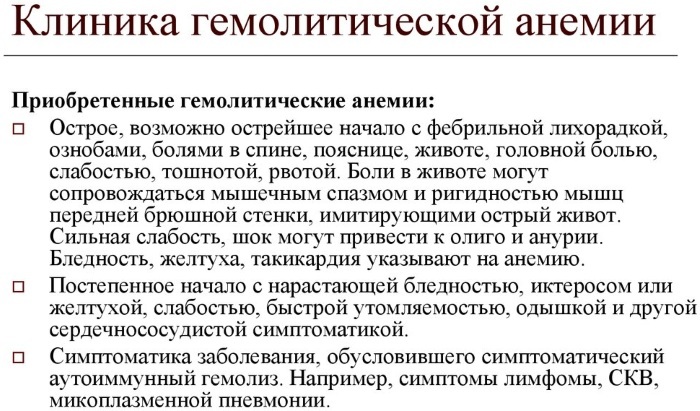
- functional disorders in the work of the kidneys;
- thrombosis of the great vessels;
- pulmonary hypertension;
- bone marrow failure;
- aplastic anemia;
- oxygen starvation of tissues of internal organs caused by a constant deficiency of hemoglobin;
- progressive hemolysis of erythrocytes with a radical change in the cellular composition of the blood;
- the onset of death provoked by vascular thrombosis, impaired renal function and severe anemia.
Traces of hemoglobin in the composition of urine in women, men and children are determined by biochemical studies of urine. The appearance of molecules of this protein compound indicates a disruption in the functioning of the organs of the hematopoietic system, kidneys, tissues liver and spleen, exposure to highly dangerous toxic substances, heavy physical exertion or prolonged hypothermia organism.
Traces of hemoglobin in the urine appear in connection with the mass death of red blood cells, the splitting of which leads to the release of an excess amount of this protein compound into the blood plasma. The lack of timely examination and qualified therapy leads to the development of a large number of complications that affect the performance of internal organs.
Video about urine analysis
About OAM is normal:

